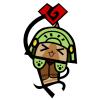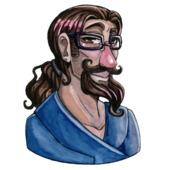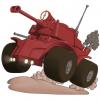Hey, everyone. My friend I and decided that we'll do a 2D RPG for our next project. We've never worked on a project with such a big scope, and we're worried about the amount of sprites we need to draw. Our previous games were platformers that didn't need that many sprites.
For monsters and other stuff we don't mind doing the hardwork, since they only have a determined set of animations and their sprites will basically stay the same, so they won't need a lot updating. It's the player that's problematic. We plan to have the armors split into three pars; helmet, body, and pants. And we also want the player to be able to wield different types of weapons, and each weapon type will have different animation sets. The idea of having to draw all those sprites for each piece of armor and weapon type is overwhelming for us, so we've been brainstorming to find a way to ease our job. The ideas range from using a simple art style, like using the same shape but different textures, to making 3D models and capture each frame to make the spritesheet (my friend has more experience working on 3D), but we haven't come to a conclusion.
We'd like to know if you guys have any tips on creating sprites for this kind of RPG. Any tips will help. We're willing to work hard. We just don't want to brute force it. ![]()










